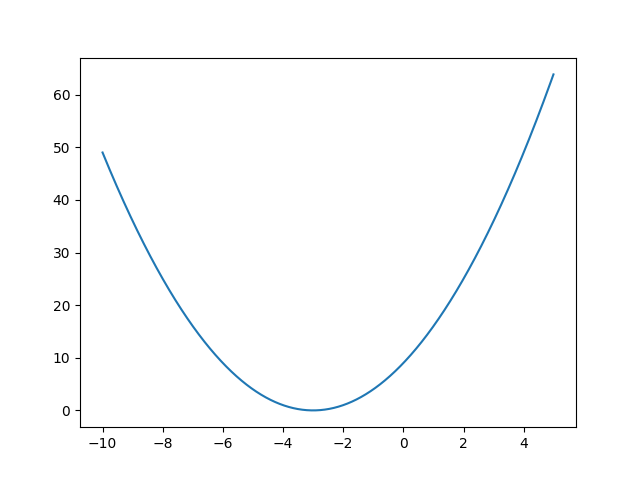Simple tensorflow 2.0 optimization
Why tensorflow 2.0 ?
Tensorflow 2.0 was recently released ! It provides, better usability with tf.keras as the recommended high-level API and Eager execution by default. It also improves clarity by removing duplicated functionalities and putting forward an intuitive syntax accross APIs. Save models is simpler, in fact there’s just one way of saving a model.
It improves flexibility by providing different level of customization. For instance variable, checkpoint and layers have now inheritable interfaces.
Time to dig in one simple example !
One simple equation
Let’s define one simple equation \(x^2 + 6x + 9 = 0\).
This quadratic equation can be reduced to \((x + 3)^2 = 0\) therefore we can easily find the exact solution when \(x = -3\).

Numerical resolution with tensorflow 2.0
For this example, we’ll use tensorflow 2.0 and one of the optimizer in tf.keras.optimizers to find a numerical approximation of the previous equation.
First, let’s import the basic packages
import numpy as np
import tensorflow as tfThen, we define the variable x with tf.Variable, see the doc. We arbitrarily initialize the variable x to 0.
x = tf.Variable(initial_value=0, name='x', trainable=True, dtype=tf.float32)We specify the coefficients with tf.constant, see the doc
coefficients = tf.constant(value=[1,6,9], shape=(3,1), dtype=tf.float32)As the minimize() function requires the cost function as a method, we set it as follow
def compute_loss():
return coefficients[0][0]*x**2 + coefficients[1][0]*x + coefficients[2][0]Then we choose the stochastic gradient descent and momentum optimizer among those provided by tf.keras, see the doc
optimizer = tf.keras.optimizers.SGD(learning_rate=0.01)And finally we call the minimize() method that will simply compute gradient using tf.GradientTape and call apply_gradients(), see the doc
for i in range(1000):
optimizer.minimize(loss=compute_loss, var_list=[x])
# print approximate solution
print(x.numpy())The whole piece of code
# Import basic packages
import numpy as np
import tensorflow as tf
# define variable
x = tf.Variable(initial_value=0, name='x', trainable=True, dtype=tf.float32)
# define coefficients
coefficients = tf.constant(value=[1,6,9], shape=(3,1), dtype=tf.float32)
# cost function
def compute_loss():
return coefficients[0][0]*x**2 + coefficients[1][0]*x + coefficients[2][0]
# get SGD optimizer
optimizer = tf.keras.optimizers.SGD(learning_rate=0.01)
## Run 1000 times
for i in range(1000):
optimizer.minimize(loss=compute_loss, var_list=[x])
# Print approximation
print(x.numpy())
#=> <tf.Variable 'UnreadVariable' shape=() dtype=int64, numpy=1000>
#=> -2.9999943Sources
- https://www.tensorflow.org/
- https://github.com/tensorflow/tensorflow/releases/tag/v2.0.0